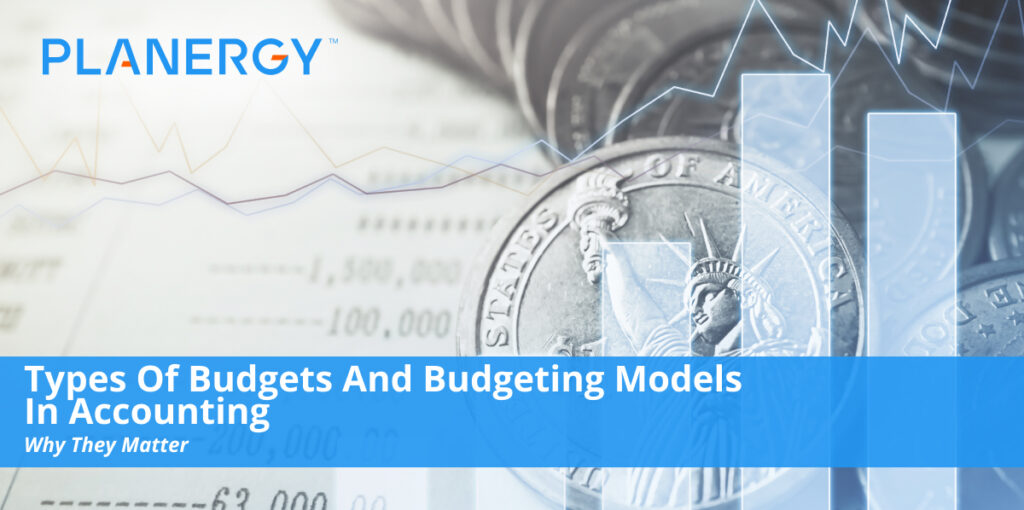Budgeting is part of any business, and it’s done for control and planning. It allows businesses to identify and set goals and objectives.
This post takes a closer look at the most common types of budgets and budget classifications.
Fixed costs along with variable costs may be present in any of these budget configurations.
Master Budget
A master budget refers to a set of financial and operating budgets for a specific accounting period.
Typically, it is used for the following calendar year or fiscal year.
These budgets are prepared quarterly or annually.
The master budget format varies with the business nature in size. Operating budgets are used in daily operations and serve as the basis for financial budgets.
Operating budgets include sales, production, direct labor, direct materials, overhead, administrative expenses, selling, cost of goods manufactured, and cost of goods sold.
Financial budgets include a budgeted income statement along with a balance sheet, cash budget, and capital expenditures budget.
Budgeted income statement and budgeted balance sheets are also known as pro forma financial statements.
Creating and managing a master budget is crucial for aligning financial planning with organizational goals, enabling better resource allocation, and facilitating performance evaluation against planned targets.
Continuous monitoring and periodic revisions of the master budget help businesses adapt to changing market conditions and operational challenges effectively.
Operating Budget
The operating budget refers to the budget for income statement elements including revenue and expenses.
Within this budget, you may have several other smaller budgets, such as:
Production Budget:
This plans the production from the number of units and cost to the types of products, plant capacity, operating cycle, make or buy policy, etc. for the budgeting period. This budget is typically based on the sales budget. It is the responsibility of the production manager.
Sales Budget:
The planned sales in both quantity and value. The sales are forecasted for the period, which is the sales manager’s responsibility.
Purchase Budget:
This plans for each purchased item that each department purchases. The purchase manager has to make this budget so that each department can make bulk purchases.
Production Cost Budget:
Also known as the manufacturing cost or work cost budget, this includes the cost of raw material, labor, direct expenses, and factory overheads. It shows the cost of production for the units that are budgeted for production.
Overheads Budget:
This includes the factory overheads budget, the administrative overheads budget, and the selling and distribution budget along with others like the plant utilization budget and research and development budget. The factory overhead factors in things such as the indirect labor cost, indirect material cost, and other indirect expenses.
Financial Budget
The financial budget refers to the budget for the balance sheet elements.
The financial budget sandals the expected assets, liabilities, and stockholders equity.
Understanding the types of budgets and their classifications are crucial to successful operations and profitability.
Cash Budget
A cash budget is a budget for expected cash inflows and outflows for the budgeted period of time. It consists of four sections:
Receipts:
This area lists the beginning cash balance along with cash collections from customers and others.
Disbursements:
This area shows all of the cash payments as characterized by their purpose.
Cash Surplus or Deficit:
In this section, the difference between the cash receipts and cash disbursements is listed either as a surplus or a deficit.
Financing: This takes a look at the detail of expected borrowings and repayments for the period.
It is intended to provide a picture of expected cash flow.
Static Budget
Also known as a fixed budget, this is the budget at the expected capacity level. Because it is fixed, it is usually used by stable companies.
This kind of budget can be used by departments with operations that are independent of capacity levels.
For instance, operations of general marketing departments and administrative departments don’t usually depend on the level of production and sales, as procurement would.
Instead, they are determined by the department’s managers and as a result, the static budget can be used by the department.
Flexible Budget
Also known as the expense budget, the flexible budget is the budget at the actual capacity level.
This budget is dynamic so it is commonly used by organizations. Flexible budgets are adjusted to the actual activity of a company.
These types of budgets can easily be prepared with a computerized spreadsheet like Excel.
The relative relevant activity range is determined for the coming accounting period.
Then, costs that are to be expected as incurred over the relevant range are analyzed.
The costs are separated based on their cost Behavior whether it be mixed, variable, or fixed. Finally, the flexible budget for variable cost and different points throughout the range is prepared.
Flexible budgets match expenses to specific revenue levels or activity levels. For instance, the utility costs can be correlated to the number of machines that are in operation.
Capital Expenditure Budget
The capital expenditure budget refers to the budget for expected investments in capital assets and long-term projects.
Typically it is prepared for 3 to 10 years. Investments and capital assets include purchases of fixed assets such as buildings, Machinery, equipment, lands, or plants.
Long-term projects may be designed to develop new products, reduce costs, expand existing product lines.
Sometimes a Capital project committee is built to oversee the capital budgeting process. The committee is usually separated from the budgeting committee.
Program Budgets
A program budget is a budget for a specific program or activity such as research and development, engineering, training, marketing, or public relations.
Program budgets are created for product lines.
As program budgets are typically generated for activities across multiple departments these budgets cannot be used for control purposes.
Zero-Based Budgeting
With zero-based budgeting (ZBB), you must determine what outcomes management wants and develop a package of expenditures to sport that outcome.
Combining various outcome expenditure packages create a budget that should result in a specific set of outcomes for the entire company.
This approach is most useful for service-level entities such as government where the provision of services is crucial.
It does however take a considerable amount of time to develop compared to a static budget.
Budget Classifications
Activity-Based Budget
Activity-based budgets are the budgets for the cost of individual activities. With activity-based budgeting, all costs are allocated to cost centers and then assigns to activities.
Product or customers are allocated the cost based on the amount of the activity they consume. Activity-based budgets and shirt performance Improvement and cost reduction.
5th activity-based budgeting requires a new budgeting model, it requires careful planning and implementation
Add-On Budget
An add-on budget is a budget based on the previous year’s budget that has been adjusted for current information.
Out on budgets can adjust for new requirements, changes in employee wage rate, and levels of inflation.
Bracket Budget
A bracket budget is a budget at both higher and lower levels than the base estimate.
Bracket budgets are basically contingency plans for downside risks. Budgets like this allow management to estimate and impact of decreased sales on earnings.
With bracket budgeting, managers can identify potential problems and acceptable profit levels.
This way, management can test various alternatives to improve the planning process.
Continuous (or Rolling) Budget
A continuous or rolling budget is a budget that is revised regularly. As the accounting period ends a new budget period is added.
For instance, the budget can be extended for another month or quarter at the end of each month or quarter.
As a result of continuous budgets are based on the most recent info for proper planning and performance. However, continuous budgets do require continuous planning.
Rolling Forecast
A rolling forecast isn’t really a budget but instead of regular update to the sales forecast.
Most often, it is done on a monthly basis. The companies then model that short-term spending based on the expected sales level.
It is easy to update and requires no budgeting infrastructure.
Incremental Budget
Incremental what is adjusted for instrumental increases in terms of percentages or dollar amount.
Historically, incremental budgeting has been the most common budgeting method. It is based on the previous year’s expenses.
With incremental budgeting, each line item receives the same incremental adjustment, such as a 10% increase or decrease, for the next budget cycle.
It’s possible to separate projects into multiple increments. Each increment can be allocated labor and other resources to finish the project.
Incremental budgets however do have multiple drawbacks. Because they are based on aggregate data they may not always be accurate.
They may not match company targets and may lead to over or under funding in certain areas of the business.
Strategic Budget
The strategic budget is adjusted for strategic planning. They are used under conditions that are unstable or uncertain.
It uses a mixture of top-down where top management allocates resources and bottom-up approaches where the lower management also participates in resource allocation.
Stretch Budget
A stretch budget is a budget based on sales and marketing forecasts higher than estimates. They aren’t used to estimate expenses.
Expenses are estimated at the budget target. Stretch budgets are often complex and subjective.
Supplemental Budget
A supplemental budget is a budget for an area that is not included in the main budget.
Target Budget
A target budget is a budget that matches major expenses to the company’s goals.
Any and all of these budgets are part of a company’s overall financial plan.
Companies may also have long-term or short-term budgets. Long term budgets are for a year or more and are not for immediate use.
Short-term budgets, on the other hand, are meant for a year or less and are created with guidance from the long-term budget.
Of the budgeting models covered here, the static model is the most common.
Alternatively, companies may wish to use a rolling forecast to adjust expenditures on the fly, to ensure it’s possible to match short-term sales goals.
It is highly flexible, so the rolling forecast approach is often the more productive budget model.
Forecasting helps guide business decisions with real-data, making it possible to choose the best course of action based on the current state of affairs.




